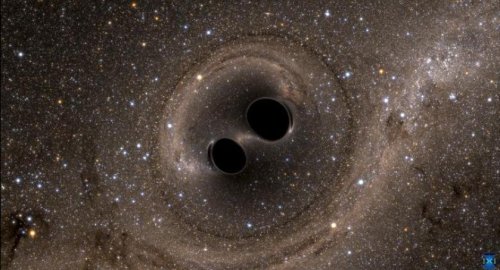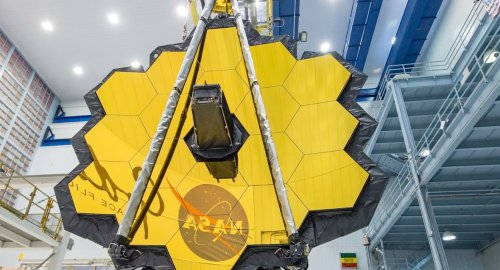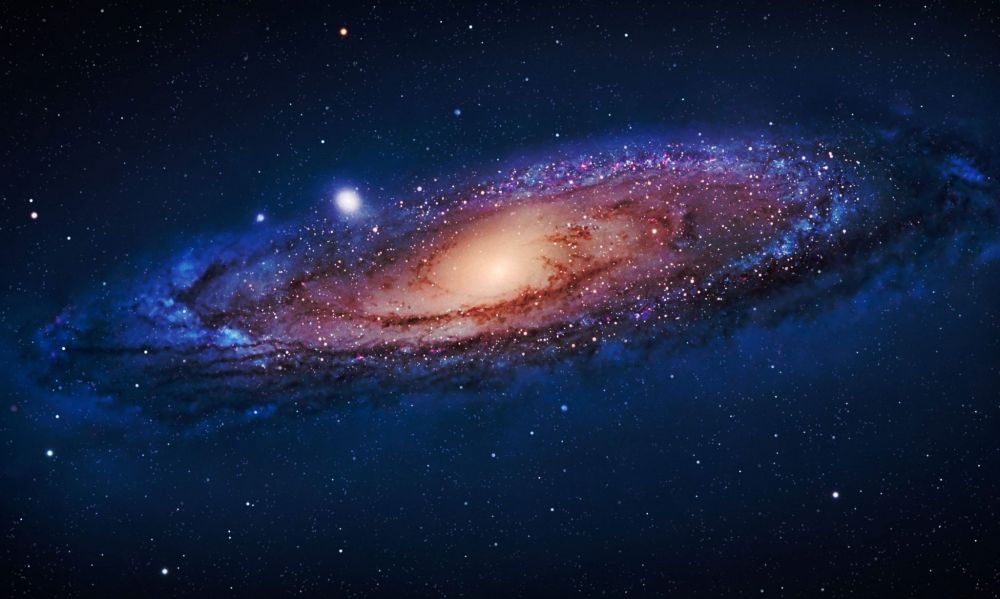
Top 10 weird and wonderful scientific discoveries of 2022

- 30-12-2022, 11:03
INA-sources
From a pig heart being successfully transplanted into a human, to being able to redirect an asteroid on a collision course with Earth, there have been all manner of weird and wonderful scientific discoveries in 2022.
They include the human genome finally been mapped after two decades, the unearthing of Africa's oldest known dinosaur, and the release of the first ever image of a supermassive black hole at the heart of our Milky Way galaxy.
There was also the alarming discovery that microplastics are everywhere – including in us – and the hugely-anticipated first images from the world's most powerful space telescope James Webb, which will peer back to the dawn of the universe.
The year began with a bang scientifically when just a week into it a dying man became the first patient in the world to get a heart transplant from a genetically-modified pig.
Terminal heart disease sufferer David Bennett underwent the nine-hour experimental procedure at the University of Maryland Medical Center in Baltimore.
Surgeons used a heart taken from a pig that had undergone gene-editing to make it less likely that his body's immune system would reject the organ.
Mr Bennett survived initially but his condition began to deteriorate two months later and he passed away at the age of 57.
He had said he knew the procedure was 'a shot in the dark' but was ineligible for a human transplant and would have died without it.
Despite what ultimately happened, doctors nevertheless called the procedure a 'watershed event' for the world of medicine.
Asteroid-deflecting mission
Armageddon and Deep Impact may have been Hollywood disaster movies, but it turns out the science behind them might not have been so far-fetched after all.
That's because in September, scientists managed to successfully execute the first ever planetary defence test by knocking an asteroid slightly off course.
The Double Asteroid Redirection Test (DART) mission saw a spacecraft intentionally crash into Dimorphos, the asteroid moonlet in the double-asteroid system of Didymos some 7 million miles (11 million km) from Earth.
It was the world's first test of a kinetic impact mitigation technique, using an object to deflect an asteroid that posed no threat to Earth, and modifying its orbit.
Before the collision, Dimorphos took roughly 11 hours and 55 minutes to circle its bigger partner Didymos.
However, this reduced by 32 minutes to 11 hours and 23 minutes following the impact.
The hope is that it could one day work as a strategy for defending our planet against future threats from space, if required.
Africa's oldest dinosaur fossil discovered
Back in the summer, dinophiles were treated to the excitement of an extraordinary discovery, after palaeontologists uncovered the oldest dinosaur ever found in Africa.
The creature, dubbed Mbiresaurus raathi, was around six feet long, weighed anywhere from 20-65lbs and roamed Zimbabwe 230 million years ago.
Fossil analysis revealed that it was a species of sauropodomorph, a relative of the sauropod, which walked on four legs, had jagged teeth and a long neck and tail.
The skeleton was discovered during two expeditions, in 2017 and 2019, to the Zambezi Valley.
'The discovery of Mbiresaurus raathi fills in a critical geographic gap in the fossil record of the oldest dinosaurs and shows the power of hypothesis-driven fieldwork for testing predictions about the ancient past,' said Dr Christopher Griffin, from the Virginia Tech College of Science.
'These are Africa's oldest-known definitive dinosaurs, roughly equivalent in age to the oldest dinosaurs found anywhere in the world.
'The oldest known dinosaurs — from roughly 230 million years ago, the Carnian Stage of the Late Triassic period — are extremely rare and have been recovered from only a few places worldwide, mainly northern Argentina, southern Brazil, and India.'
The most complete baby woolly mammoth
It looks a bit like a mummified little elephant, but this creature below is actually an extremely well preserved baby mammoth that lived more than 30,000 years ago.
It was discovered by gold miners in Yukon, Canada, in June.
The Yukon government said it was 'the most complete mummified mammoth found in North America', and only the second such find in the world.
The calf, named 'Nun cho ga', meaning 'big baby animal' in the Hän language, was frozen in permafrost, resulting in its remains being mummified.
Images show its skin still intact with bits of hair clinging to the body.
A further analysis revealed the calf is female and lived alongside wild horses, cave lions and giant steppe bison that once roamed Yukon thousands of years ago.
New super space telescope's first images
There was much excitement in the summer as NASA's new $10 billion (£7.4 billion) space telescope finally sent back its first images of the early universe.
Astronomy fans were treated to dazzling, unprecedented images of a 'stellar nursery', dying star cloaked by dust and a 'cosmic dance' between a group of galaxies.
Hailed as 'the dawn of a new era in astronomy', they were taken by James Webb – a successor to the famous Hubble observatory – and were released by NASA in July.
It put an end to months of waiting and feverish anticipation as people across the globe were treated to the first batch of a treasure trove of images that will culminate in the earliest ever look at the dawn of the universe.
Webb's infrared capabilities mean it can 'see back in time' to within a mere 100-200 million years of the Big Bang, allowing it to snap pictures of the very first stars to shine in the universe more than 13.5 billion years ago.
The human genome is finally COMPLETE
It took two decades but in 2022 the human genome was finally mapped in its entirety.
In April, researchers published a gap-free sequence of roughly 3 billion bases (or 'letters') an a single person's DNA, 20 years after the first draft was produced.
They said that a complete, gap-free sequence of bases in our DNA was critical for understanding human genomic variation and genetic contributions to certain diseases.
In addition to the medical implications, a full genome also helps to answer the question of what makes us distinctly human.
Some of the genes that were gaps in the original genome are thought to be critically important in helping to make a bigger brain in humans compared to other apes, the researchers suggested.
The work was done by the Telomere to Telomere (T2T) consortium, which included researchers at the National Human Genome Research Institute (NHGRI); the University of California, Santa Cruz (UCSC); and University of Washington, Seattle.
The newly completed genome, dubbed T2T-CHM13, is now accessible through the online UCSC Genome Browser.
Astronomers reveal FIRST EVER image of Sagittarius A*
In an historic first, astronomers revealed in May how they had captured a remarkable image of a supermassive black hole at the heart of our Milky Way galaxy.
The eagerly-anticipated picture showed Sagittarius A* — which is roughly 4.3 million times the mass of our sun and is located about 27,000 light-years away from the Earth.
Because of its distance from us, experts said it appears the same size in the sky as a donut on the moon.
Fossil from THE DAY the dinosaurs died 66m years ago
In April, palaeontologists revealed that they had unearthed the first ever fossilised remains of a dinosaur that was killed on the day a massive asteroid struck Earth 66 million years ago.
The leg of a Thescelosaurus – a small herbivore – was discovered alongside a fragment of the seven mile-wide space rock that killed it.
Experts believe the limb, complete with skin, was likely 'ripped off' when the Chicxulub asteroid hit, and then buried in fallen debris on the day of impact.
The fossilised leg was unearthed alongside a series of remarkable finds at the Tanis fossil site in the US State of North Dakota, known as the 'Hell Creek Formation'.
The site, which was first discovered in 2008, is extraordinary because it appears to record the events from the first minutes until a few hours after the impact of the Chicxulub asteroid in extreme detail.
Killing off the dinosaurs: how a city-sized asteroid wiped out 75 per cent of all animal and plant species
Around 66 million years ago non-avian dinosaurs were wiped out and more than half the world's species were obliterated.
This mass extinction paved the way for the rise of mammals and the appearance of humans.
The Chicxulub asteroid is often cited as a potential cause of the Cretaceous-Paleogene extinction event.
The asteroid slammed into a shallow sea in what is now the Gulf of Mexico.
The collision released a huge dust and soot cloud that triggered global climate change, wiping out 75 per cent of all animal and plant species.
Researchers claim that the soot necessary for such a global catastrophe could only have come from a direct impact on rocks in shallow water around Mexico, which are especially rich in hydrocarbons.
Within 10 hours of the impact, a massive tsunami waved ripped through the Gulf coast, experts believe.
Source: Daily Mail
La Liga continues to pressure Barcelona
- Sport
- 09:47
Zionist airstrikes target the Damascus countryside
- International
- 09:07
Foreign Minister Invites Dutch Counterpart to Visit Iraq
- politics
- 06:38
Iraq Condemns Zionist Airstrikes on Syria
- politics
- 06:36
Al-Sistani: Tomorrow, the 29th of Ramadan
- Local
- 25/03/29
Al-Amiri warns of any war between Iran and the US
- politics
- 25/04/01












